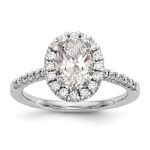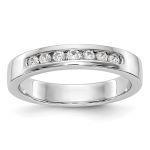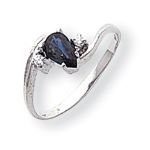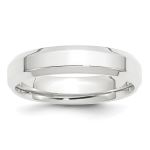| |
|
|
| Largely thanks to the cachet of platinum-status credit cards, "going platinum” being the success designation of selling a million albums, and the fact that platinum blond is currently a super status term- platinum has an aura of exclusivity, prestige, and general alpha-ness. It’s always a popular metal for bridal jewelry but even so, people do have a lot of questions about this metal. Search results for platinum-related queries indicate plenty of curiosity, some measure of confusion, and the occasional misconception. Addressing these questions, in person or in writing, even before you are asked can help establish your authority and increase customer’s trust and confidence. |
| |
|
|
| |
 |
|
| |
|
|
|
What Exactly Is It? The standard answer is that it is a naturally occurring precious metal chemical element. A little history might intrigue some customers. First, its name comes from platina, Spanish for “little silver”, the metal that it was initially and most commonly confused with. Conquistadors in South America considered it of little worth, and it wasn’t until the 18th century when it was officially classified as a metal that its value as a commodity was recognized. When that happened, resources in South America were nearly depleted, but new ones were found in the Ural Mountains and in South Africa. |
| |
|
|
| |
 |
|
| |
|
|
|
How Does Platinum Compare to White Gold? First and foremost, explain that platinum is naturally white whereas gold is made white-ish by adding white alloy materials. The ish here indicating that white gold isn’t quite as bright as platinum which is why white gold is routinely plated with rhodium. Over time, white gold may need replating, whereas platinum will keep its sheen. Platinum jewelry’s relative purity also makes it the better choice for anyone with sensitive skin, especially if they have a nickel allergy. Finally, denser and with a higher specific gravity than gold, platinum jewelry is slightly heavier than similarly sized gold items, so comfort may be a consideration for some people. |
| |
|
|
| |
 |
|
| |
|
|
|
Can Platinum Rings Be Resized and\or Engraved? Yes, and yes, and they are no more expensive to resize or engrave than any other metal. Platinum does have a higher melting point, making it a little trickier to work with, so be sure to reassure your customers that their repairs will be taken care of by appropriately experienced staff. |
| |
|
|
| |
 |
|
| |
|
|
|
Why is it More Expensive? At roughly 40-50% more expensive than gold, people do expect an explanation. First, let them know that platinum is about 30 times rarer than gold (and as a selling point, that can be romanticized as a distinctive quality). It’s also employed in a purer form, whereas even 18K is only 75% pure, platinum jewelry is typically 95% pure, so platinum is more expensive than gold for the same reason that 18K is more expensive than 14K. 95% pure platinum jewelry is typically stamped 950, 950Pt, or simply Plat. |
| |
|
|
| |
 |
|
| |
|
|
|
How Should I Care for It? One of the most common concerns that people have about platinum is that it appears to scratch more readily than gold. That misconception can be attributed to the different ways that gold and platinum handle surface scratches. When white gold is scratched, it is scratched away, with an actual, albeit minuscule, loss of material. Platinum is more malleable, so material gets moved (think smooshed) rather than scratched. Over time, platinum jewelry may develop something called a patina quality, making it look like an antique. Repolishing will bring back its luster with virtually no metal loss as the surface basically gets ironed rather than stripped. Let customers know they can bring in their platinum rings for repolishing anytime, and in fact, ask for permission to send them periodic reminders to do so. |
| |
|
|
| |
 |
|
| |
|
|
| Finally, Platinum is the designated gift material for a 70th wedding anniversary. We say give it earlier, way earlier, as a statement of faith and optimism in longevity and long-term marital bliss! |
